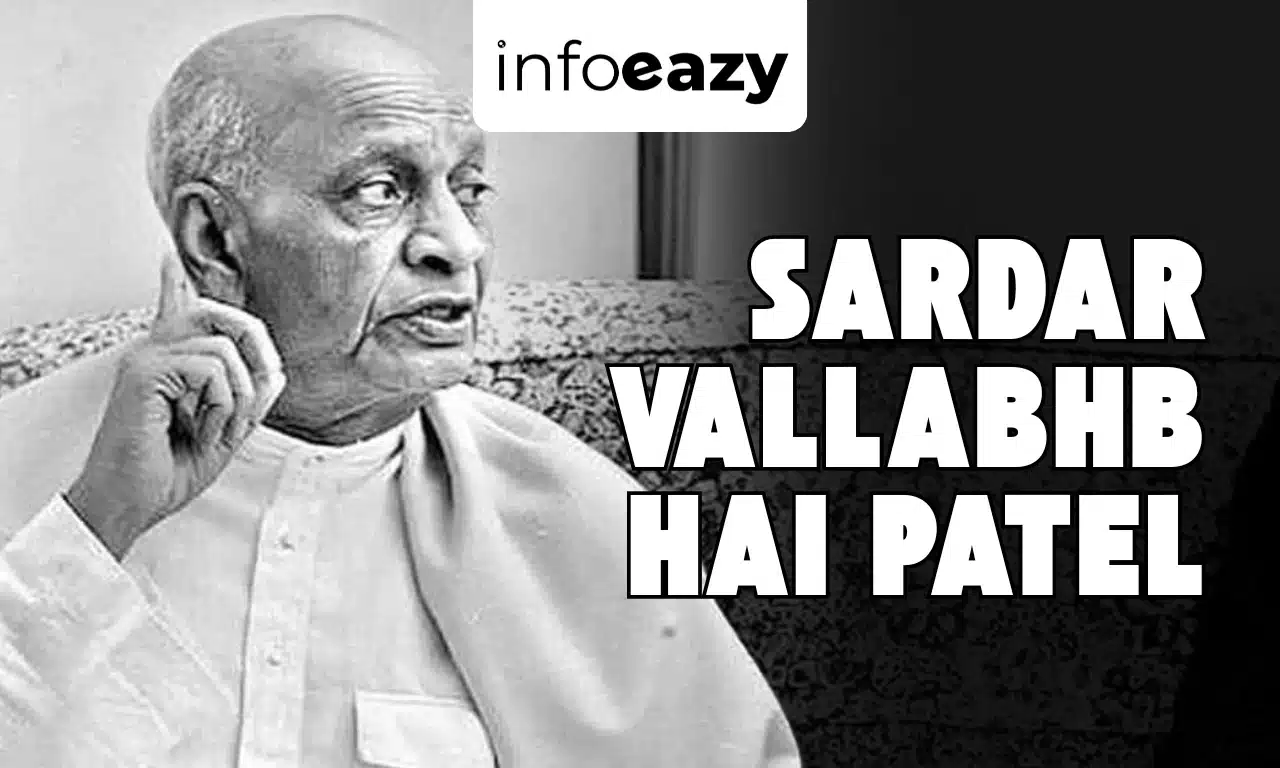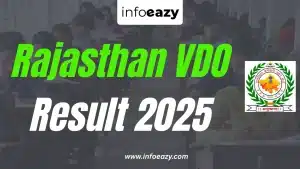Sardar Vallabhbhai Patel, also known as the Iron Man of India, was one of the greatest leaders of modern India. He played a crucial role in the country’s freedom struggle and later became the first Deputy Prime Minister and Home Minister of India. His biggest achievement was the unification of more than 560 princely states, which laid the foundation of a strong and united India. Patel’s courage, vision, and determination earned him deep respect.
Sardar Vallabhbhai Patel
Vallabhbhai Jhaverbhai Patel was born on 31 October 1875 in Nadiad, Gujarat, in a modest farmer’s family. Despite limited resources, he rose to become one of the top lawyers of Ahmedabad before joining politics. Inspired by Mahatma Gandhi, he dedicated his life to India’s independence. His leadership in the Bardoli movement earned him the title “Sardar,” meaning leader.
| Personal Information of Sardar Vallabhbhai Patel | |
| Aspect | Description |
| Full Name | Vallabhbhai Jhaverbhai Patel |
| Born | 31 October 1875, Nadiad, Gujarat |
| Father’s Name | Jhaverbhai Patel |
| Mother’s Name | Ladbai |
| Popular Title | Iron Man of India, Sardar |
| Profession | Lawyer, Political Leader |
| Positions Held | Deputy Prime Minister & Home Minister of India |
| Died | 15 December 1950, Bombay (Mumbai) |
Education of Sardar Vallabhbhai Patel
Patel completed his early studies in Karamsad and Petlad before moving to London for higher education. He joined the Middle Temple, London, where he completed his law degree in just two years instead of four, showing his extraordinary dedication. After returning to India, he became one of the most successful lawyers in Ahmedabad.
| Educational Journey of Patel | |
| Stage | Description |
| Primary Education | Karamsad and Petlad, Gujarat |
| Higher Education | Middle Temple, London |
| Course | Law |
| Achievement | Completed Law in 2 years instead of 4 |
Political Career of Sardar Vallabhbhai Patel
Patel entered active politics through the Indian National Congress and quickly became a trusted leader. He strongly supported Gandhi’s principles of non-violence and truth. His role in Kheda Satyagraha (1918) and Bardoli Satyagraha (1928) made him a hero of the farmers. Later, he played a key role in the Quit India Movement of 1942 and guided India’s political journey after independence.
| Highlights of Patel’s Political Career | ||
| Year | Event/ Role | Significance |
| 1918 | Kheda Satyagraha | Relief to farmers from unjust taxation |
| 1928 | Bardoli Satyagraha | Earned title “Sardar” |
| 1931 | Karachi Session of Congress | Played important leadership role |
| 1942 | Quit India Movement | Senior leader of national struggle |
| 1947 | Deputy Prime Minister & Home Minister | Integration of princely states |
Major Events of Patel’s Life
Sardar Patel’s life was filled with important milestones that shaped India’s freedom and unity. His leadership during farmers’ movements made him a symbol of justice, while his statesmanship after independence made him the unifier of India.
| Timeline of Major Events in Patel’s Life | ||
| Year | Event | Importance |
| 1875 | Birth in Nadiad, Gujarat | Beginning of a leader’s journey |
| 1918 | Kheda Satyagraha | First major leadership role |
| 1928 | Bardoli Satyagraha | Earned title “Sardar” |
| 1942 | Quit India Movement | Firm stand against British rule |
| 1947-49 | Integration of princely states | United 562 states into Indian Union |
| 1950 | Death in Bombay | End of an era |
Patel’s Role in Integration of Princely States
Patel’s most remarkable contribution was the integration of 562 princely states into the Indian Union. With the support of V.P. Menon, he used diplomacy, firmness, and negotiation to bring the states into India. States like Hyderabad, Junagadh, and Kashmir were major challenges, but Patel handled them decisively, ensuring that India became one strong nation after independence.
| Key States Integrated by Patel | ||
| State | Situation | Outcome under Patel’s Leadership |
| Hyderabad | Wanted independence | Integrated through police action |
| Junagadh | Wanted to join Pakistan | Joined India after people’s movement |
| Kashmir | Invaded by Pakistan | Acceded to India under emergency |
Death of Sardar Vallabhbhai Patel
Sardar Patel passed away on 15 December 1950 in Bombay due to a heart attack. His death was a great loss to the nation. To honor his memory, 31 October is celebrated as Rashtriya Ekta Diwas (National Unity Day). Patel’s legacy of unity and integrity remains a guiding force for India.
Also Read: Chandrashekhar Azad
Statue of Unity
To honor his contributions, the Government of India built the Statue of Unity at Kevadiya in Gujarat. Inaugurated on 31 October 2018, it is the world’s tallest statue, standing at 182 meters. It symbolizes Patel’s vision of national unity and has become a global tourist attraction.
| Statue of Unity Details | |
| Aspect | Description |
| Location | Kevadiya, Gujarat |
| Inaugurated | 31 October 2018 |
| Height | 182 meters |
| Built in honor of | Sardar Vallabhbhai Patel |
Quotes by Sardar Vallabhbhai Patel
Sardar Patel’s thoughts reflect his vision of unity, duty, and discipline. His quotes continue to inspire Indians.
- “Manpower without unity is not a strength unless it is harmonized and united properly.”
- “Every citizen of India must remember that he is an Indian and he has every right in this country but with certain duties.”
- “My only desire is that India should be a good producer and no one should be hungry, shedding tears for food in the country.”
Sardar Vallabhbhai Patel: Important Facts
The key facts relevant for the Exam Point of View has been tabulated below that are related to the life and contributions of Sardar Vallabhbhai Patel:
| Important Facts about Sardar Vallabhbhai Patel | |
| Fact | Description |
| Bharat Ratna | Awarded posthumously in 1991 |
| First Deputy PM | Served from 1947 to 1950 |
| Bardoli Satyagraha | Gave him the title “Sardar” |
| National Unity Day | Celebrated on 31 October every year |
| Role in Independence | Unifier of 562 princely states |
Sardar Vallabhbhai Patel FAQs
Q1. Who was Sardar Vallabhbhai Patel? +
Q2. When was Sardar Patel born? +
Q3. What was Sardar Vallabhbhai Patel’s greatest contribution? +
Q4. Why is Patel called the Iron Man of India? +
Q5. What is the Statue of Unity? +
Tags: Sardar Vallabhbhai Patel




